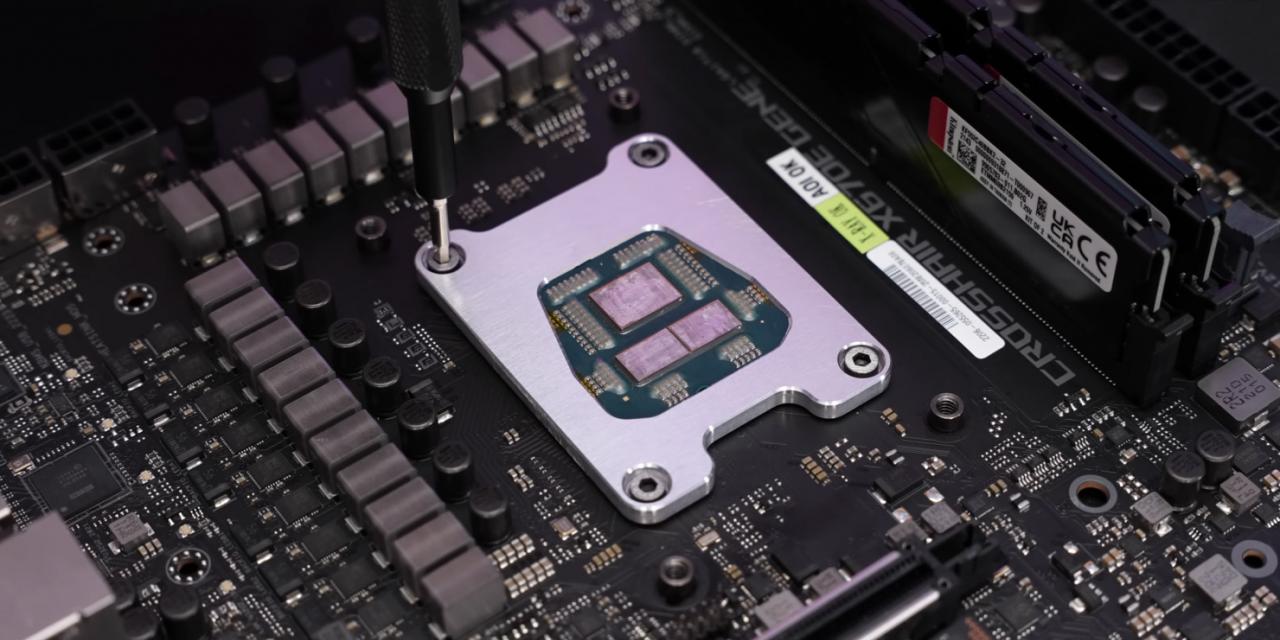
It turns out Ryzen 7000 CPUs don't have to run as hot as they tend to. All you have to do is delid them. While the process of removing the IHS isn't easy, there are prototype kits out there already form the likes of professional overclocker, Der8auer, and he's shown off just what an effect it can have in a recent video. In it, he takes a 7900X (having previously broken a 7700X in the delidding process) and manages to remove the integrated heatspreader to reveal the internal chiplets and I/O die. When sticking a big cooler on that, he found that temperatures fell by a massive 20 degrees.
Ryzen 7000 CPUs tend to run quite hot. AMD has rated them for 95 degrees in regular use, so that shouldn't be much of a problem. However, when a chip runs hot like that, there's usually a lot of overclocking headroom to be found by lowering the temperatures. The fact that hardcore overclockers have managed over 7.2GHz with a Ryzen 7000 CPU on liquid nitrogen shows that. So being able to bring down the core temperature by 20 degrees without resulting to extreme cooling solutions is a big deal.
That's not to say that direct die cooling is something everyone should do. It's a dangerous process and you'll need to be super careful with the CPU once it's all done, as it won't be anywhere near as robust moving forward. But if you aren't shifting your PC around a lot and want to make the most of your new AMD CPU's performance, direct die cooling might be the way to go.
